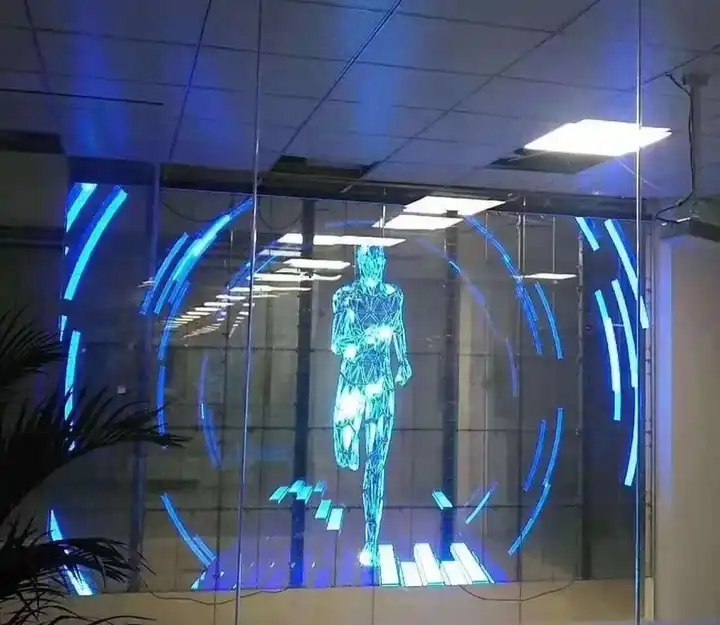Many transparent LED display screen manufacturers, when introducing to customers, mostly say that the higher the brightness, the better the quality. Is this really the case? The editor will take you to uncover the truth.

The brightness of LED electronic display screens refers to the luminous intensity per unit area of the display screen during normal operation, in units of cd/m2 (i.e., the amount of cd luminous intensity per square meter of area, “cd” is called candela in Chinese, and “m2” is called square meter in Chinese). The higher the brightness of the LED electronic display screen, the better the brightness of the image, and the clearer it looks from a distance. The brightness of indoor video screens is generally between 200-1200cd/m2. The brightness of outdoor video screens is generally between 3000-7000cd/m2.
The brightness of LED electronic display screens is a difficult indicator to measure (due to expensive testing instruments), and can generally be calculated by testing the light intensity of the display screen’s light-emitting tubes. For example, when a 2500 point/m2 outdoor LED full-color display screen is white balanced, a light-emitting diode light intensity meter is used to randomly measure 10 pixel points, and the average light intensity of the red tube is 420 mcd; The green tube is 1620mcd; If the light intensity of the blue tube is 285mcd, the brightness of the display screen is 2500X (2X420+1620+285)/1000=6862.5cd/m2, 6862500cd/m2, because the screen has 2500 pixels per square meter, with 2 red tubes, 1 green tube, and 1 blue tube per pixel.
Because LED electronic displays use self luminous technology as a light source, LED beads usually experience brightness decay and other issues after a period of use. However, to achieve brightness, a larger driving current is required. However, under strong current, the stability of LED beads will be greatly reduced and decay quickly. In other words, brightness is sacrificing the image quality and lifespan of LED screens as a sacrifice for brightness. Not only that, transparent LED display screens, as one of the many display products with higher brightness, once became the dominant outdoor display products. However, once it is night, the screen becomes too bright and becomes a burden, which is environmental pollution. Therefore, pursuing moderate brightness and environmental protection becomes more meaningful.
The last factor is cost. If we simply pursue higher brightness, it will inevitably lead to an increase in the cost of transparent LED display projects. This means that users who purchase display screens are likely to exceed their budget for this, and the demand for performance in certain parts may be wasted. Therefore, when choosing an LED screen, there is no need to believe too many misconceptions from merchants that the brighter the screen, the better. The most important thing is to understand that blindly pursuing brightness is meaningless. Indoor temperatures are generally between 600 and 1500, outdoor temperatures are generally above 5000, and semi outdoor temperatures are generally between 2000 and 5000.
The above is about whether the brighter the transparent LED display screen, the better. Please also pay attention to those who purchase transparent LED display screens. I hope it can be helpful to everyone.
